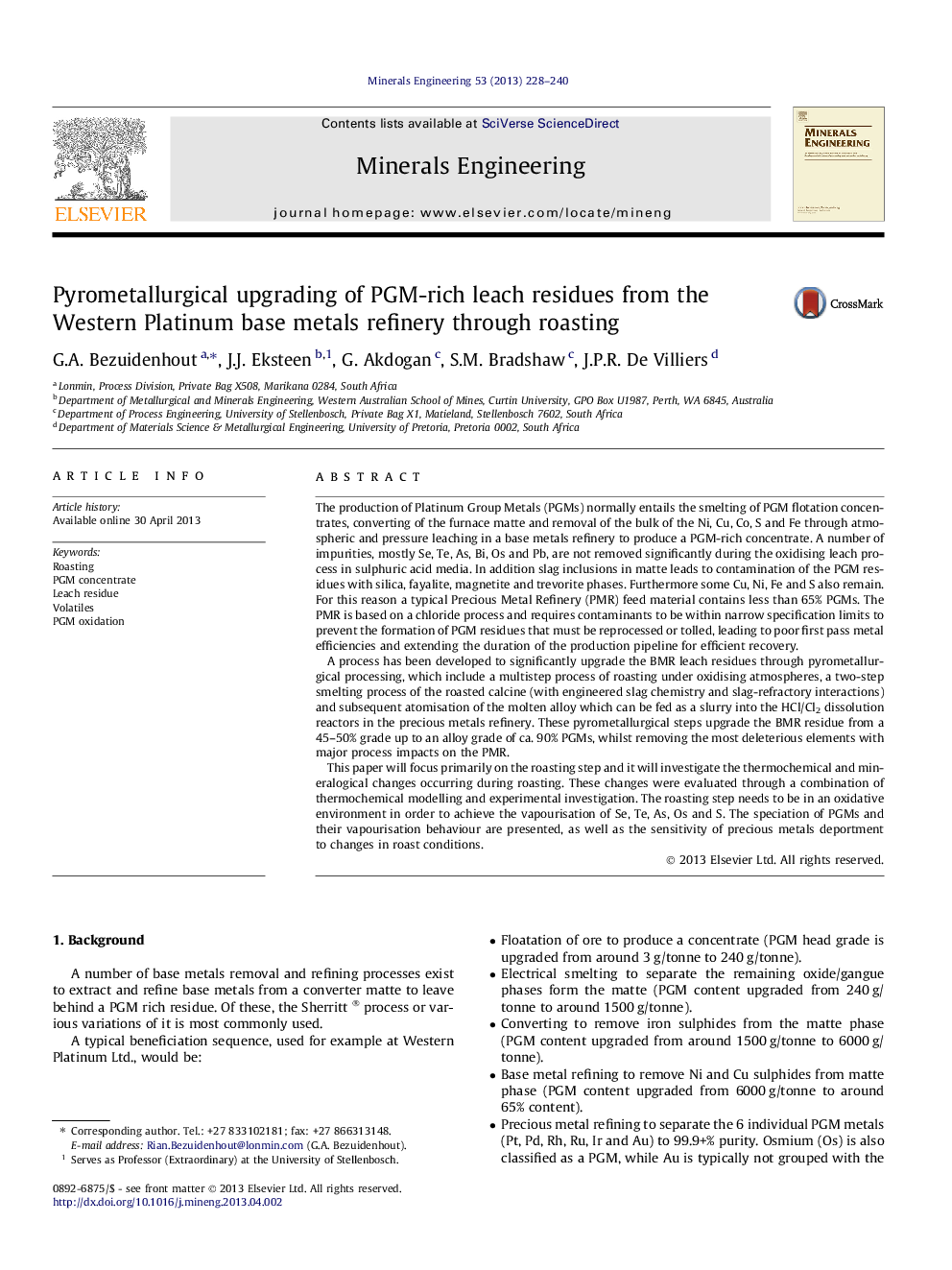| کد مقاله | کد نشریه | سال انتشار | مقاله انگلیسی | نسخه تمام متن |
|---|---|---|---|---|
| 233397 | 465337 | 2013 | 13 صفحه PDF | دانلود رایگان |

• Roasting of PGM residues can remove volatile elements without PGM losses.
• PGM oxidation occurs at roasting temperatures.
• As and Os removal does not proceed according to thermodynamic modelling.
• Some PGM’s form solid solution phases at roasting temperatures.
The production of Platinum Group Metals (PGMs) normally entails the smelting of PGM flotation concentrates, converting of the furnace matte and removal of the bulk of the Ni, Cu, Co, S and Fe through atmospheric and pressure leaching in a base metals refinery to produce a PGM-rich concentrate. A number of impurities, mostly Se, Te, As, Bi, Os and Pb, are not removed significantly during the oxidising leach process in sulphuric acid media. In addition slag inclusions in matte leads to contamination of the PGM residues with silica, fayalite, magnetite and trevorite phases. Furthermore some Cu, Ni, Fe and S also remain. For this reason a typical Precious Metal Refinery (PMR) feed material contains less than 65% PGMs. The PMR is based on a chloride process and requires contaminants to be within narrow specification limits to prevent the formation of PGM residues that must be reprocessed or tolled, leading to poor first pass metal efficiencies and extending the duration of the production pipeline for efficient recovery.A process has been developed to significantly upgrade the BMR leach residues through pyrometallurgical processing, which include a multistep process of roasting under oxidising atmospheres, a two-step smelting process of the roasted calcine (with engineered slag chemistry and slag-refractory interactions) and subsequent atomisation of the molten alloy which can be fed as a slurry into the HCl/Cl2 dissolution reactors in the precious metals refinery. These pyrometallurgical steps upgrade the BMR residue from a 45–50% grade up to an alloy grade of ca. 90% PGMs, whilst removing the most deleterious elements with major process impacts on the PMR.This paper will focus primarily on the roasting step and it will investigate the thermochemical and mineralogical changes occurring during roasting. These changes were evaluated through a combination of thermochemical modelling and experimental investigation. The roasting step needs to be in an oxidative environment in order to achieve the vapourisation of Se, Te, As, Os and S. The speciation of PGMs and their vapourisation behaviour are presented, as well as the sensitivity of precious metals deportment to changes in roast conditions.
Journal: Minerals Engineering - Volume 53, November 2013, Pages 228–240